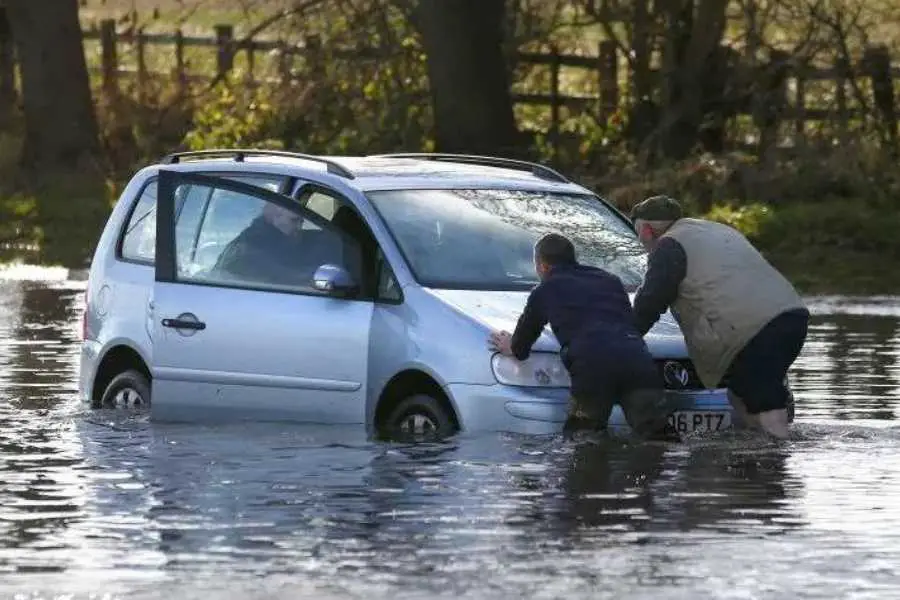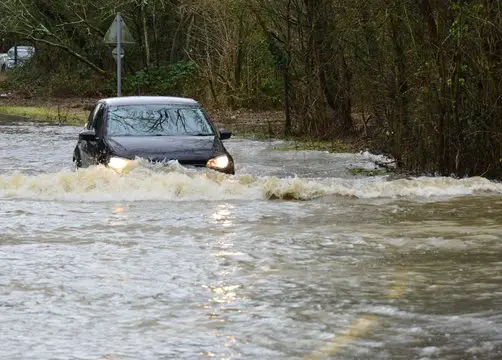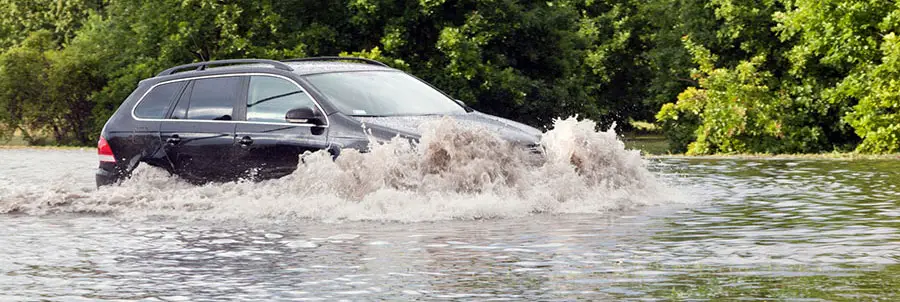Stalling in water can be a scary and dangerous situation for any driver. It occurs when a car’s engine stops running while it is submerged in water, often as a result of flooding or heavy rain.

Knowing how to properly restart a car after stalling in water is important to ensure the safety of yourself and your passengers, as well as to prevent further damage to the car.
Safety Precautions
Before attempting to restart your car after stalling in water, it is important to take a few safety precautions.
Check for Electrical Hazards:
Water and electricity do not mix, so it is important to check for any electrical hazards before attempting to restart your car.
Make sure that the car is not in contact with any live wires or electrical sources, and that all electrical components of the car are turned off before attempting to start the engine.
Check for Gas Leaks:
If your car has been submerged in water, it is possible that gas may have leaked from the tank.
Before attempting to restart your car, check for any gas leaks by smelling around the car and checking for any visible leaks. If you suspect a gas leak, do not attempt to start the car and call for professional help.

Check for Damage to the Car:
Before attempting to start your car, visually inspect the car for any signs of damage. Check for any bent or damaged parts, such as the exhaust system or the undercarriage of the car.
If there is significant damage to the car, it is best to have it towed to a professional mechanic before attempting to start it.
Steps to Restarting the Car
Removing water from the air intake:
The first step in restarting a car after stalling in water is to remove any water from the air intake. The air intake is typically located near the front of the car, and water can be removed by using a towel or a rag to soak up the water.
Attempting to start the car:
Once the water has been removed from the air intake, you can attempt to start the car. If the car starts and runs, it is important to let the engine idle for a few minutes to allow any remaining water to evaporate.
If the car does not start:
If the car does not start on the first attempt, it is possible that the spark plugs may be wet. Check the spark plugs and if they are wet, dry them off before attempting to start the car again.
If the car still does not start:
If the car still does not start after checking and drying the spark plugs, check the distributor cap and rotor. If these are wet, dry them off before attempting to start the car one final time.
Note: If the car still does not start after following these steps, it is best to have it checked by a professional mechanic.
Prevention Measures
While stalling in water can be a scary and dangerous situation, there are steps that you can take to prevent it from happening in the first place. These steps include:
Avoiding deep water while driving:
One of the most effective ways to prevent stalling in water is to avoid deep water while driving. If you see a large puddle or a flooded road, it is best to turn around and find an alternate route.
Keeping the car maintained and in good condition:
Another way to prevent stalling in water is to keep your car maintained and in good condition. Regularly checking and replacing worn or damaged parts, such as the air filter, spark plugs, and battery, can help ensure that your car is in good working order and less likely to stall.
Having emergency supplies in the car:
It is also a good idea to have emergency supplies in your car, such as a flashlight, a blanket, and a basic tool kit, in case you do stall in water.

Conclusion
Stalling in water can be a dangerous and scary situation, but with the right knowledge and preparation, it can be dealt with safely and efficiently. By following the steps outlined in this article, you can safely restart your car after stalling in water and take the necessary precautions to prevent it from happening in the first place.
Remember to always be aware of your surroundings and to avoid deep water while driving, keep your car maintained, and have emergency supplies in your car. It is always recommended to share this information with others, so they can also be prepared for such situations.
What should I do if my car stalls in water and won’t start?
If your car stalls in water and won’t start, it is important to follow the steps outlined in the article to safely restart your car.
This includes removing any water from the air intake, checking the spark plugs and distributor cap and rotor, and drying them off if they are wet. If the car still does not start, it is best to have it checked by a professional mechanic.
Is it safe to drive through deep water?
It is not safe to drive through deep water, as it can cause your car to stall, flood the engine, and cause damage to the car’s electrical and mechanical systems. To avoid stalling in water, it is best to avoid deep water while driving and to find an alternate route.
What should I do if I suspect a gas leak after my car has stalled in water?
If you suspect a gas leak after your car has stalled in water, do not attempt to start the car. Instead, call for professional help and have your car towed to a mechanic.
Gas leaks can be dangerous and should be handled by a professional.
How can I prevent my car from stalling in water?
Preventing your car from stalling in water can be done by avoiding deep water while driving, keeping your car maintained and in good condition, and having emergency supplies in your car. Regularly checking and replacing worn or damaged parts, such as the air filter, spark plugs, and battery, can help ensure that your car is in good working order and less likely to stall.
What should I do if my car stalls in water and the engine won’t turn over?
If your car stalls in water and the engine won’t turn over, it may be caused by a flooded engine. In this case, it is best to have your car towed to a professional mechanic. They will be able to diagnose the problem and make any necessary repairs.
While waiting for the mechanic, you can try to remove water from the air intake and dry off any wet components such as the spark plugs and distributor cap and rotor.
